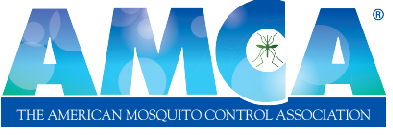Skip to main content
Issues
Select Issue
ARTICLES
,
,
,
,
,
,
,
,
,
,
,
,
,
,
,
,
, and
SCIENTIFIC NOTES
,
,
,
,
,
,
,
, and
SURVEILLANCE OF WEST NILE VIRUS IN MARYLAND: INTEGRATING SMART VECTOR IDENTIFICATION WITH ENVIRONMENTAL AND EPIDEMIOLOGICAL INSIGHTS
Khushi Anil Gupta,
Hannah Markle,
Alyssa Schultz,
Brian Prendergast,
Margaret Glancey,
Autumn Goodwin,
Tristan Ford, and
Roy Faiman
THE IMPERATIVE OF AEDES MOSQUITO TESTING FOR ENHANCED DENGUE SURVEILLANCE IN THE UNITED STATES
Solomon K. Birhanie and
Michelle Q. Brown
FIELD APPLICATION RATE OF NATULAR® SC IN METRIC UNITS TARGETING AEDES ALBOPICTUS
Abigail Golembiewski,
Alexandria Crans,
Nicolas Cepparulo,
Tadhgh Rainey,
Lindsay Baxter, and
Jack Petersen
MOSQUITO SPECIES OF NEW YORK STATE: AN UPDATED CHECKLIST WITH PUBLIC AND VETERINARY HEALTH SIGNIFICANCE
Waheed I. Bajwa,
Liyang Zhou, and
Zahir Shah
An Inexpensive System to Investigate the Daily Rhythms of Insects
Vilma M. Montenegro and
Nathan D. Burkett-Cadena
A Survey for Aedes aegypti in Delaware and the Virus-Positive Pool Rates of Aedes albopictus and Aedes triseriatus for West Nile and Zika Viruses
Jack B. Gingrich,
Troy M. Saltiel,
Zachary Vincent, and
Rebecca Sahraoui
Mosquito Control Emergency Preparedness and Response to Natural Disasters
C. Roxanne Connelly and
Jeff Borchert
Ovicidal and Latent Effects of Pulicaria jaubertii (Asteraceae) Leaf Extracts on Aedes aegypti
Ahmed Z. Shehata,
Tarek M. El-Sheikh,
Raafat M. Shaapan,
Sobhy Abdel-Shafy, and
Abdullah D. Alanazi
Powered by PubFactory
